Weishan Lake Wetland Park
Project Statement
Weishan Lake Wetland Park provides a new example for the design of large parks. The project balances the relationship among water restoration, wetland protection and tourism development in the rapid social development. The region is the largest lake wetland in Asia and has been declining for years due to poor agricultural and aquaculture performance. One of the main objectives of the design is to restore the water quality and environment of this important regional ecological wetland. The Park transforms a rural wetland into an important destination for scientific education and eco-tourism, promotes the economic development of adjacent urban areas, and also contributes to the environmental protection of the waterways along the vast South-to-North Water Transfer Project in China. After the completion of the park project, the previously rare local wildlife returned to their native places, which fully demonstrated the health of the restored water, ecosystem and habitat.
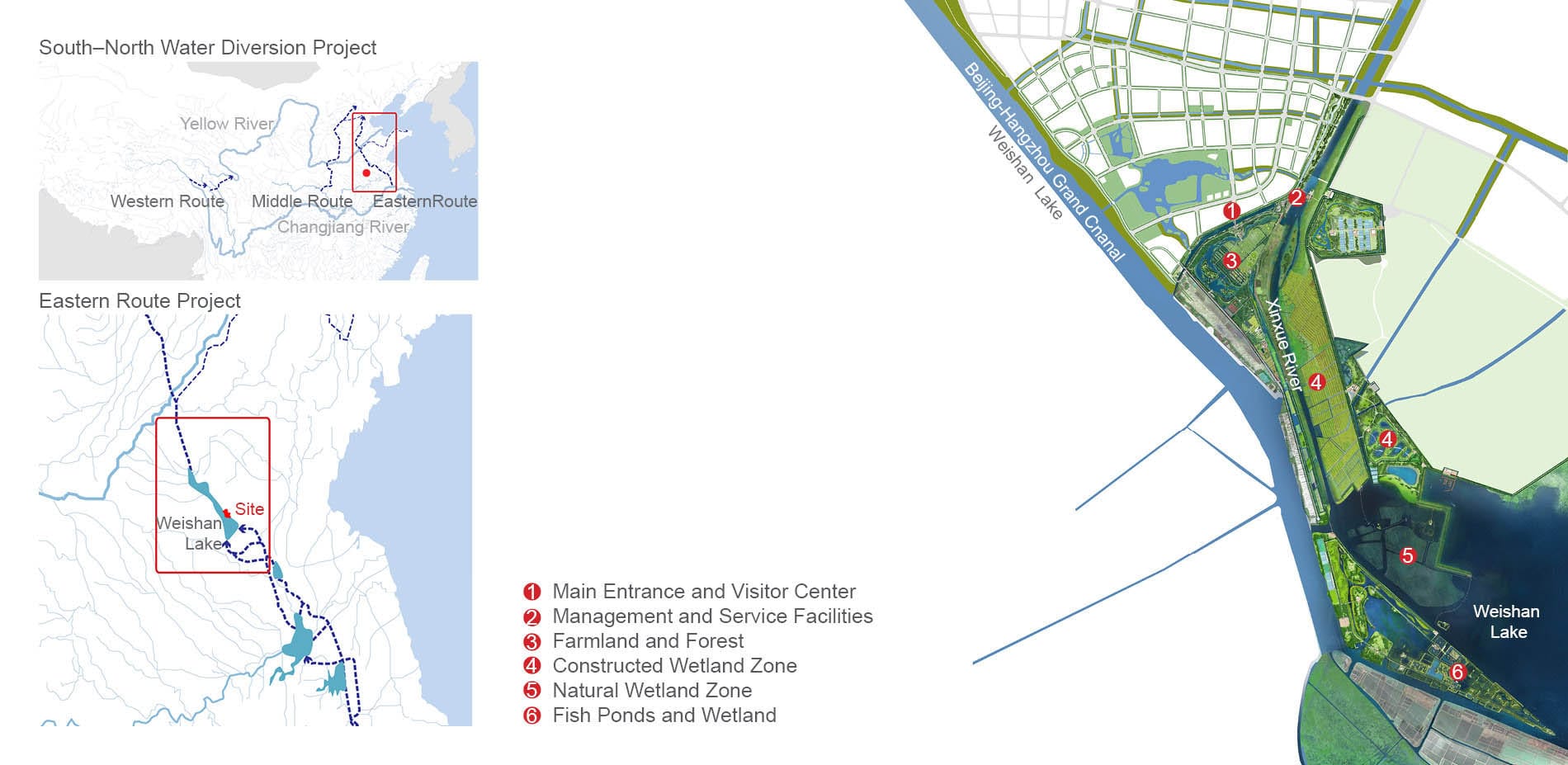
Project description
Location and Background:
Located in the south of Weishan County, Jining City, Shandong Province, Wetland Park is part of the East Route of China's South-to-North Water Transfer Project, which will bring reliable water supply to northern China after decades of construction. The base is far away from the main economic center, and its transportation links with the adjacent urban areas are greatly limited. At the same time, it lacks tourism infrastructure and supporting services. The ecological and environmental conditions in the region are relatively undisturbed, but the ecological links with the wider region are not good. Agricultural activities in the base also lead to serious environmental pollution in some regions. There are abundant natural resources and diversified ecological environment, but the landscape features are relatively vague.
In 2008, the team was commissioned by the local government to provide a general planning and landscape design scheme for Wetland Park Tourism Development and environmental protection. Landscape planning covers an area of about 40 square kilometers and the design area of the first stage is about 2000 hectares. The project started in May 2010 and is expected to cost US$42 million (about RMB 260 million). The first phase of Weishan Lake Wetland Park was completed and opened to the public in May 2013. In the same year, it was selected as one of the most attractive wetlands in China in the national voting held by the State Forestry Administration and CCTV. Design, analysis and planning:
Under the leadership of landscape architects, an interdisciplinary team of master planners, environmental planners, ecologists, economists and architects has developed a new paradigm for the design and planning of park land in the region of China. In view of the complexity and fragile ecological conditions of the base, the team conducted in-depth research, analysis, field survey and evaluation to understand the base conditions, and then developed appropriate strategies and comprehensive overall planning. The implementation of the project is divided into the following stages:
1. The ecological resources, habitats, hydrology, planning and development strategies, cultural characteristics and spatial structure of the base and its adjacent areas are analyzed.
2. Setting up project vision and orientation, delimiting ecological protection areas, ecological restoration areas and wildlife habitats;
3. To formulate strategies for economic development, ecological protection, landscape and architectural design;
4. To formulate general planning and development guidelines;
5. Communicate with stakeholders, including government departments and public representatives;
6. Design and revise the vision after communication.
7. Deepening and documentation of design;
8. Coordination in the construction process.
The design of the park combines comprehensive planning, natural conservation and ecosystem management, maximizing the potential of existing ecological resources and achieving operational flexibility. By incorporating minimally invasive design strategies into local cultural elements at different scales, the design team has created a "northern poetic wetland" in the local population, highlighting the local landscape and cultural characteristics, and enabling sensory pleasure to keep pace with sustainable low-carbon development. The result is a beautiful and attractive park, which integrates waterway improvement, ecological protection, habitat restoration and tourism development artistically.
Five landscape zones:
The unified principles formulated by the five landscape zones are related to their respective ecological functions, namely, core protected areas, natural restoration areas, restricted human flow areas, real estate development areas and a protected rural community. In addition, the designer has built several new and restored habitats: an artificial wetland, riparian wetland, permanent freshwater marsh, Park land, grassland, restored natural wetland, fish pond, farmland and a water development zone.
Optimizing water resources management:
The high flood level and seasonal fluctuation of water level in Weishan Lake affect the hydrological system of the base, which brings great challenges to landscape design. The current situation of topography, pool and river structure should be carefully considered in the design of water system, so as to create a highly flood-proof network and smooth and unimpeded water connection. In order to optimize the water environment, water purification wetlands are set up at the inlet and outlet to ensure that the inflow and outflow water are highly clean. At the same time, the best rainwater management system is implanted to maximize the control and removal of potential pollution from surface runoff.
Rehabilitation of wetlands using local vegetation:
After analyzing the current situation of the environment, such as water, vegetation and topography, and the possible pollution caused by human activities in the future, a wetland purification system is established in highly polluted areas to ensure the cleanliness of water. The multi-structure wetland constructed by local vegetation not only optimizes the purification effect, but also improves the landscape quality.
A variety of wildlife habitats:
One of the main objectives of the project is to establish an ecological habitat network, first of all, to create a core habitat to lock in the surrounding habitats with emerging ecological values. The design team created a variety of habitats (woodland, farmland and wetlands) to optimize riparian ecosystems and increase and enhance animal diversity. It is expected that typical waterbirds, such as storks, cranes and geese, will be observed in the future. Now we can see the nesting behavior of some birds, which stimulates tourists'desire to come here for new experience and ecological education value.
Minimally invasive materials:
The wooden bird-watching corridor stretches through the wetland. Designers place these lightweight wooden and iron structures in the landscape in a low-key way, minimizing the interference to the area. The new soft soil retaining wall in the base is constructed from ready-made willows and remaining poplar stumps. The branches covered with stakes can fix the surrounding soil layer after rooting and germination. Electric driveways and major sidewalks are paved with highly permeable gravel pavement; independent small service facilities provide electricity to meet their own lighting needs through solar and wind energy equipment.
Car-free resorts:
The plan strictly controls the vehicles entering the park. All visitor vehicles must be parked outside the park through existing roads separated from resorts and protected areas, minimizing the impact on habitats. Most of the roads in the park have non-motorized lanes and sidewalks and provide water transportation. Road and water traffic system constitute double-loop, as the main traffic mode of the north and South regions, it can form different transfer combinations. Because some scenic spots can only be seen on board, the motor lane is mainly located near the main function area. In a word, the scheme revises and optimizes the existing road network and reduces the impact on the environment.
Enhancing plant diversity:
Designers protect and optimize habitats including water, wetlands and forests by improving the diversity of existing relatively low native vegetation and reducing the invasion of exotic algae in regional waters; and plant native plants in forest and wetland restoration to further enhance the ecological value of vegetation. Diversified vegetation structure (including trees, shrubs and grasslands) is conducive to shaping the changing green landscape and enriching the natural diversity of the park.
Sustainable architecture:
Green roofs are used in the design of tourist centers and the rest of the area. They conform to the downhill terrain and create a flat-topped rainwater garden. The roof rainwater is collected here and processed, and then flows into the waterway at the base of the wall built by the local stone materials, which will then sink into the water body. Small independent service facilities all use solar and wind power to meet their own lighting.
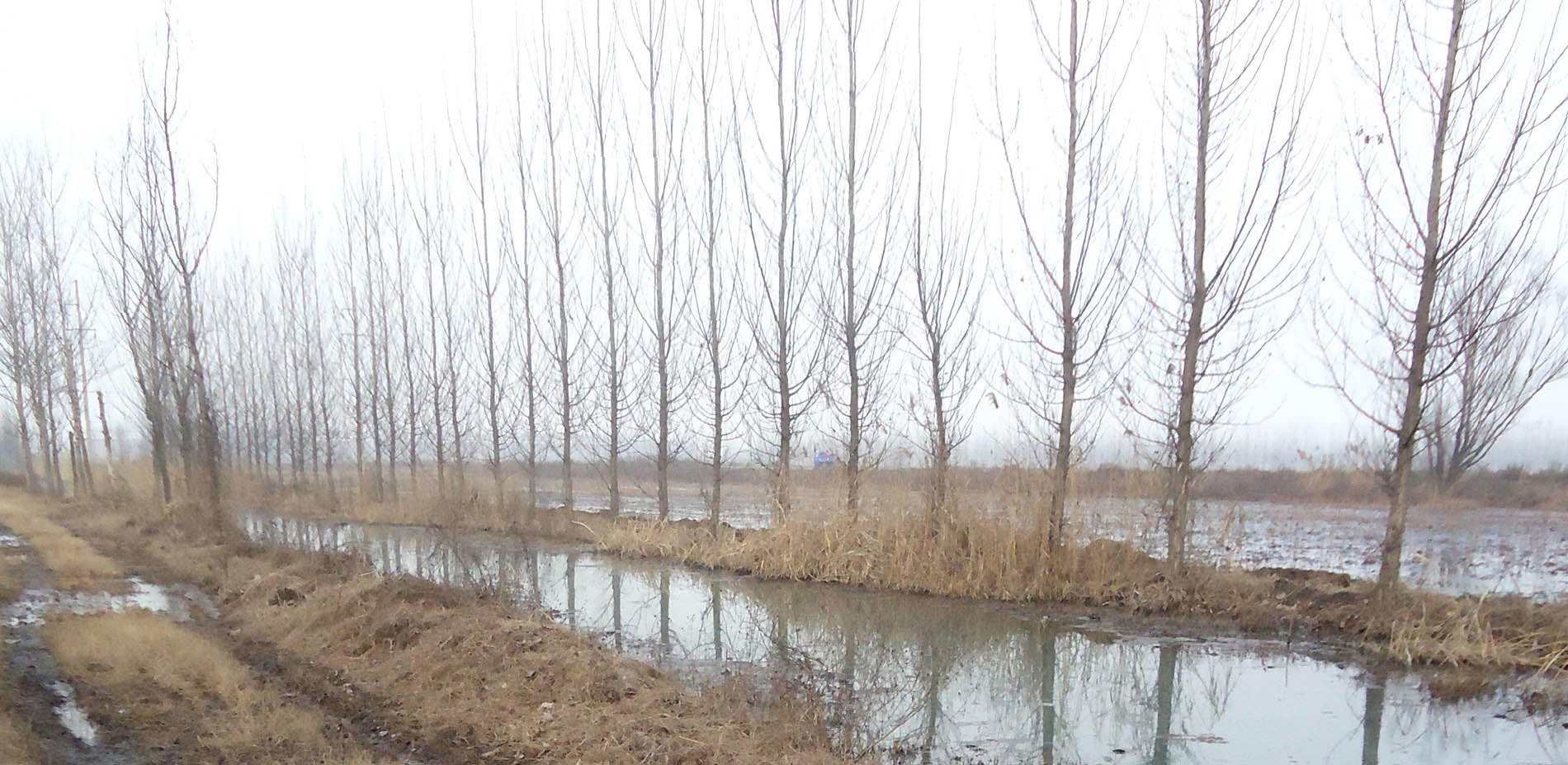
△ There are abundant natural resources and diversified ecological environment in the original base, but the landscape characteristics are relatively vague. Ecological and environmental conditions are relatively undisturbed, but agricultural activities in the base have led to serious environmental pollution in some areas.
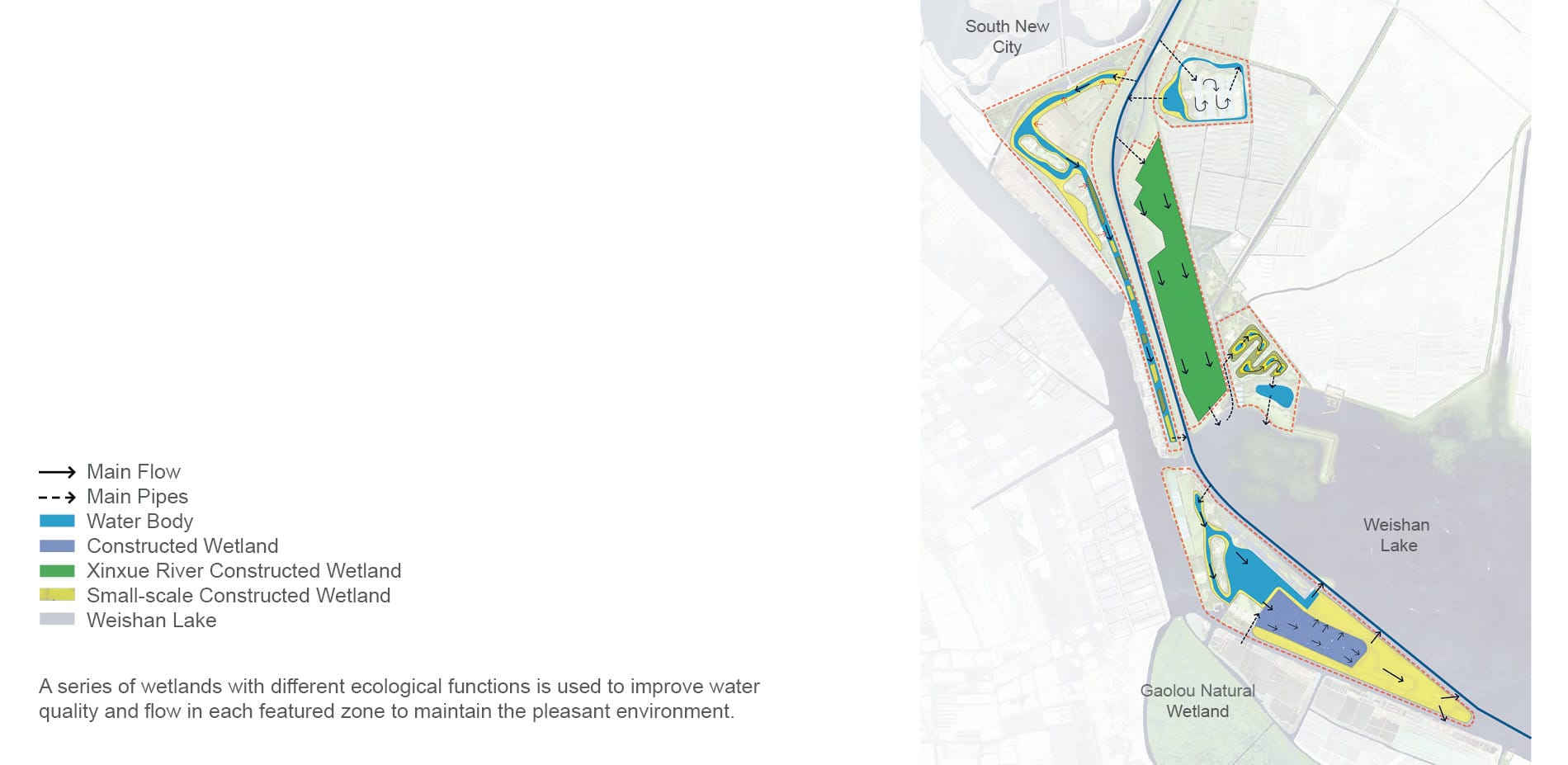
△ Water Treatment and Educational Wetland System
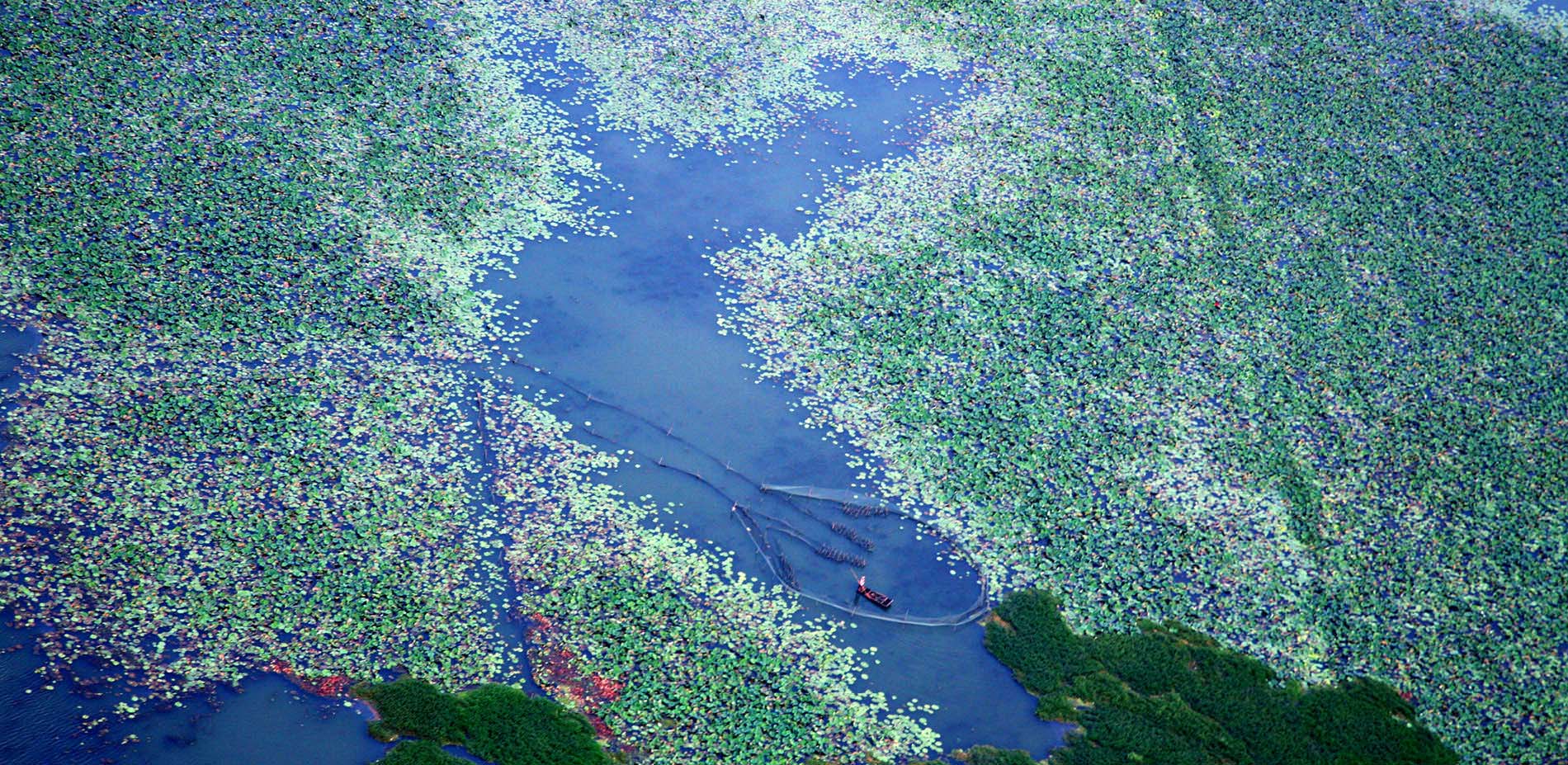
△After the treatment of constructed wetlands, the water was re-influxed into Weishan Lake. The boundless lotus scenery of Weishan Lake is well known.
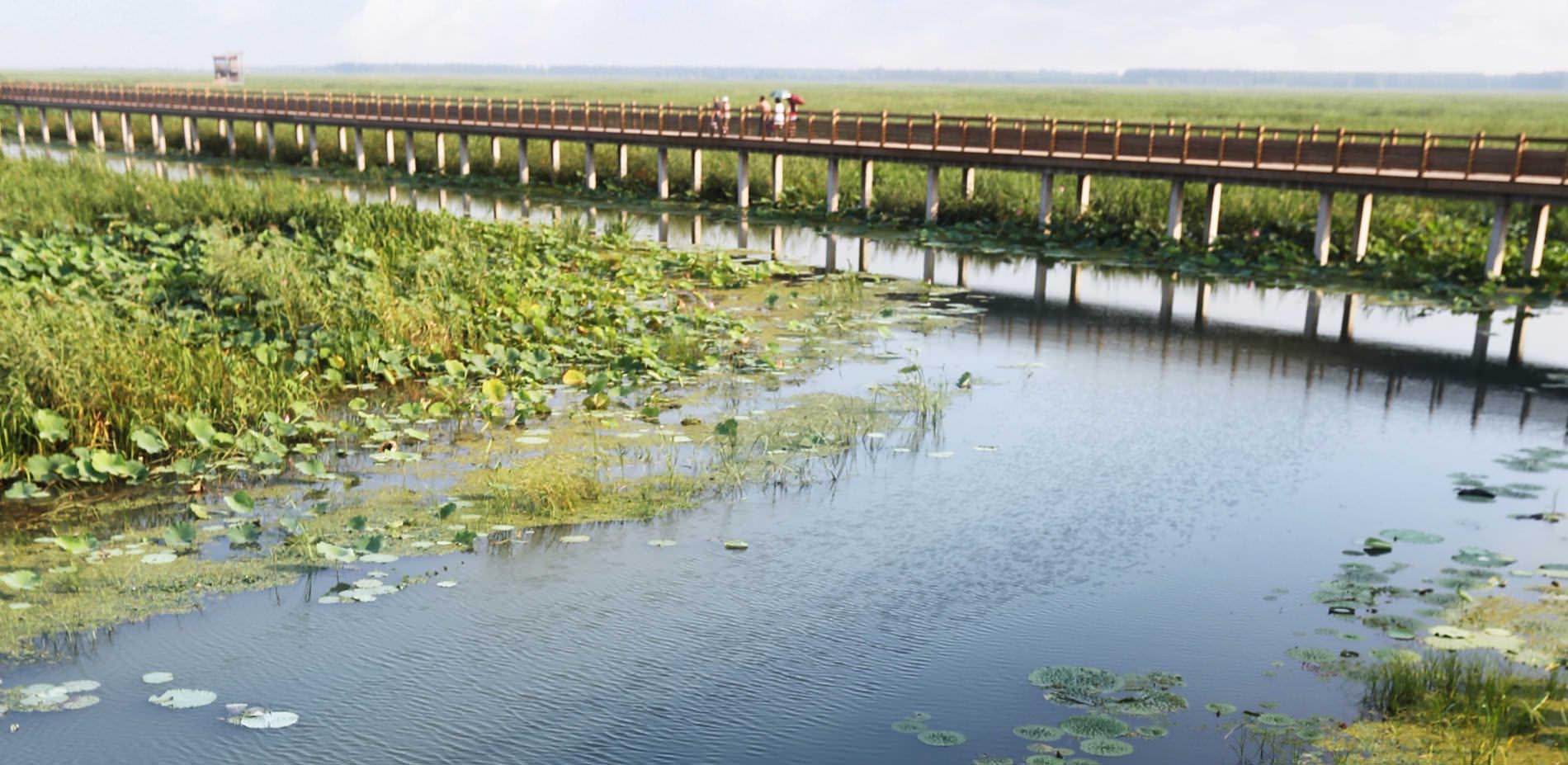
△ Select local wetland plant species for use in different regions, improve water quality through water diversion, and create sustainable and healthy Lake habitats
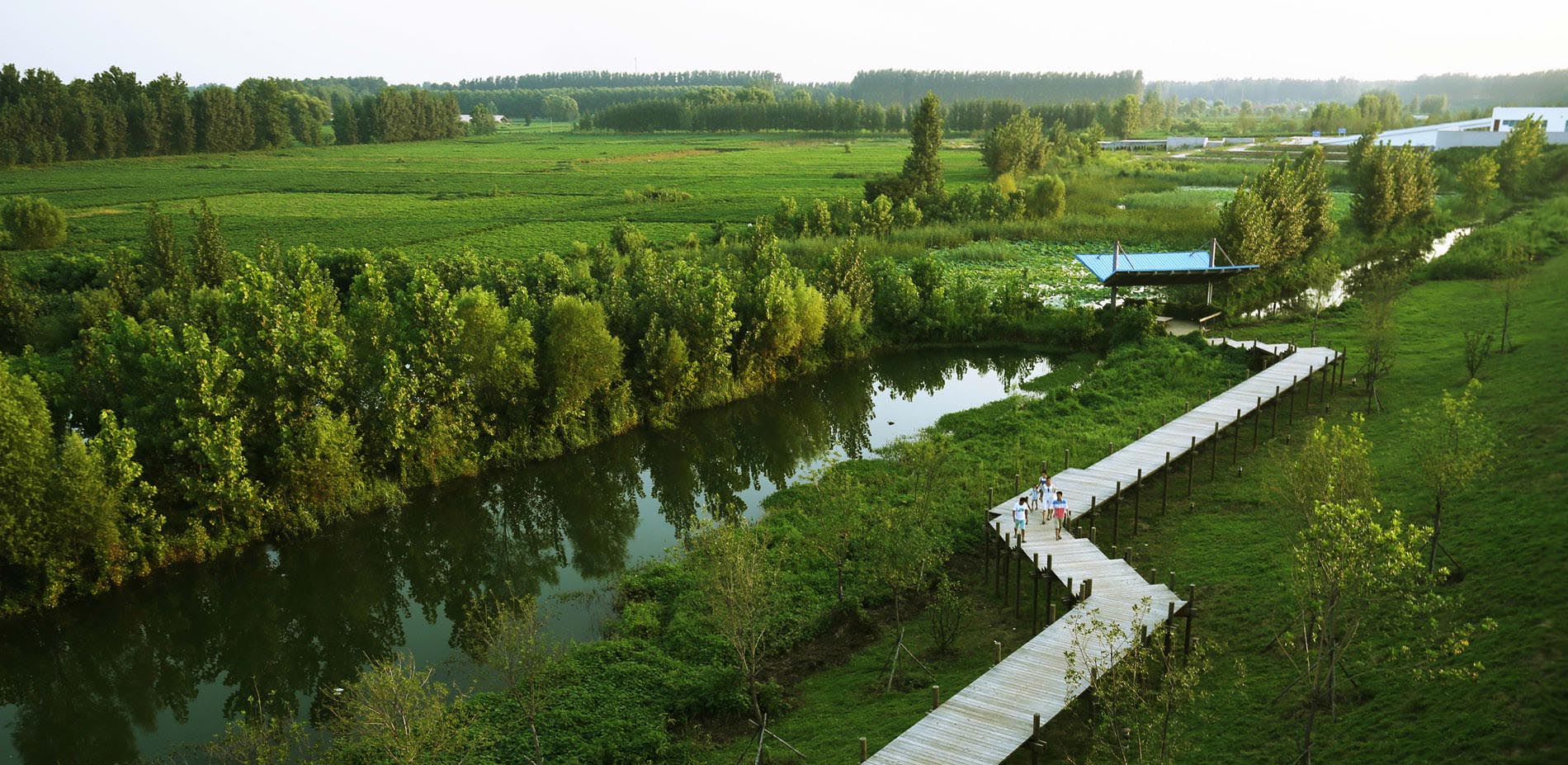
△ Through layered and diversified planting to create a four-season change of landscape features. By adding native flora and fauna, the region has been restored to a vibrant landscape suitable for outpatient surgery education.
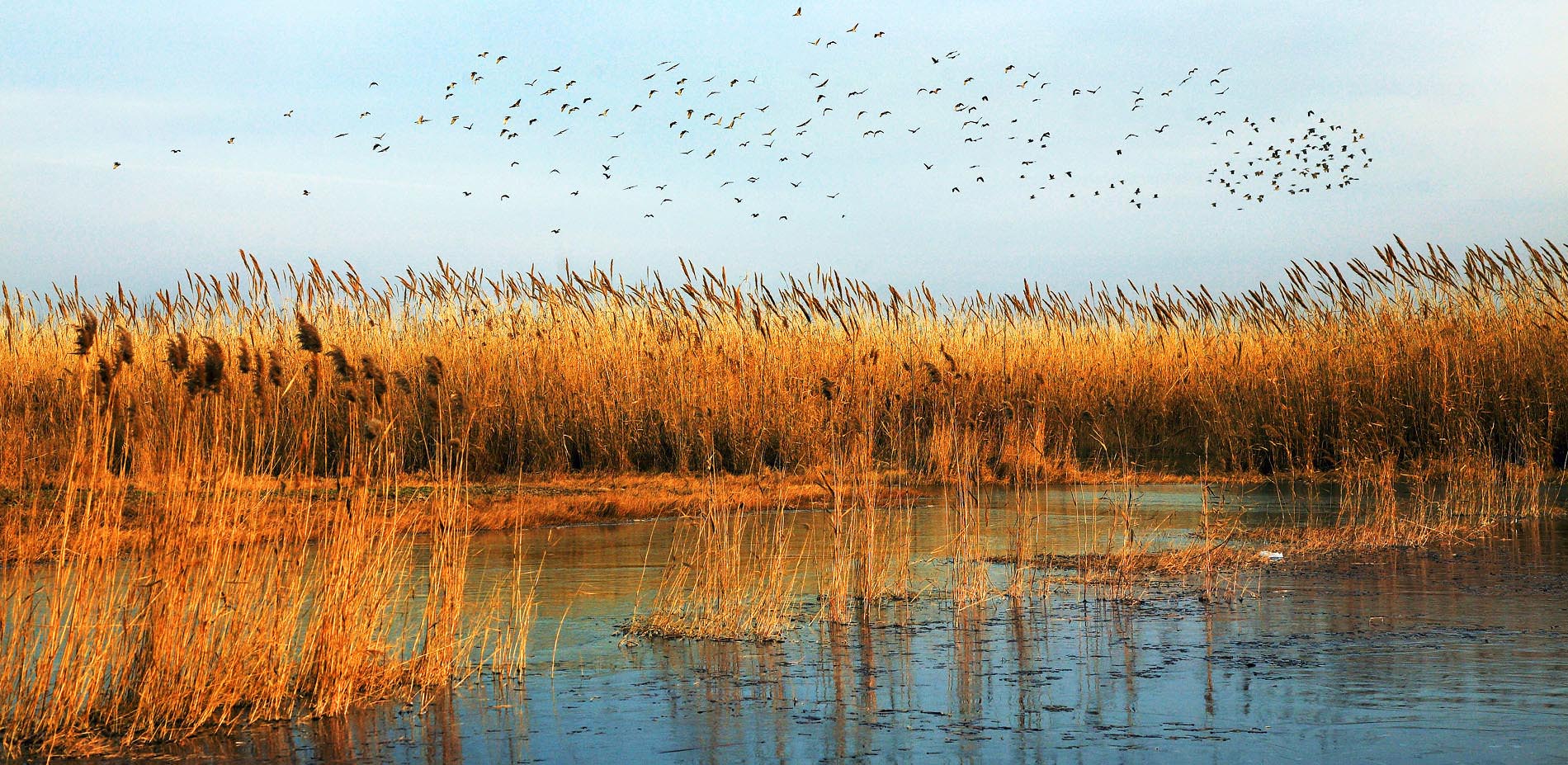
△ After completion, the wetland area reached 200 hectares. In the most efficient period, COD removal rate is estimated to be 50%, phosphorus removal rate is close to 60%, and ammonia removal rate is as high as 65%.
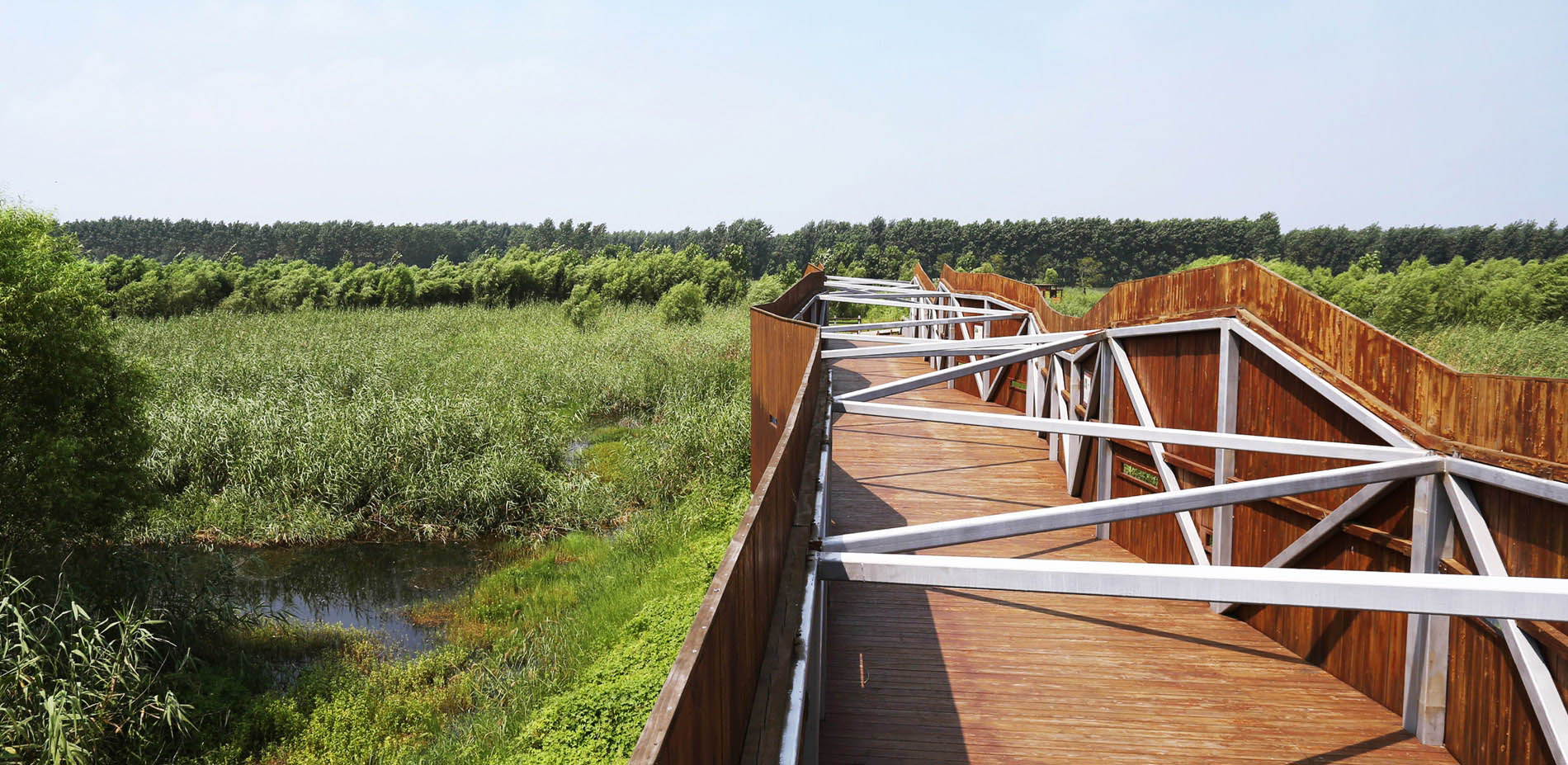
△ Designers integrate bird-watching corridors with the environment to reduce the impact of pedestrian traffic on bird habitats and activities.
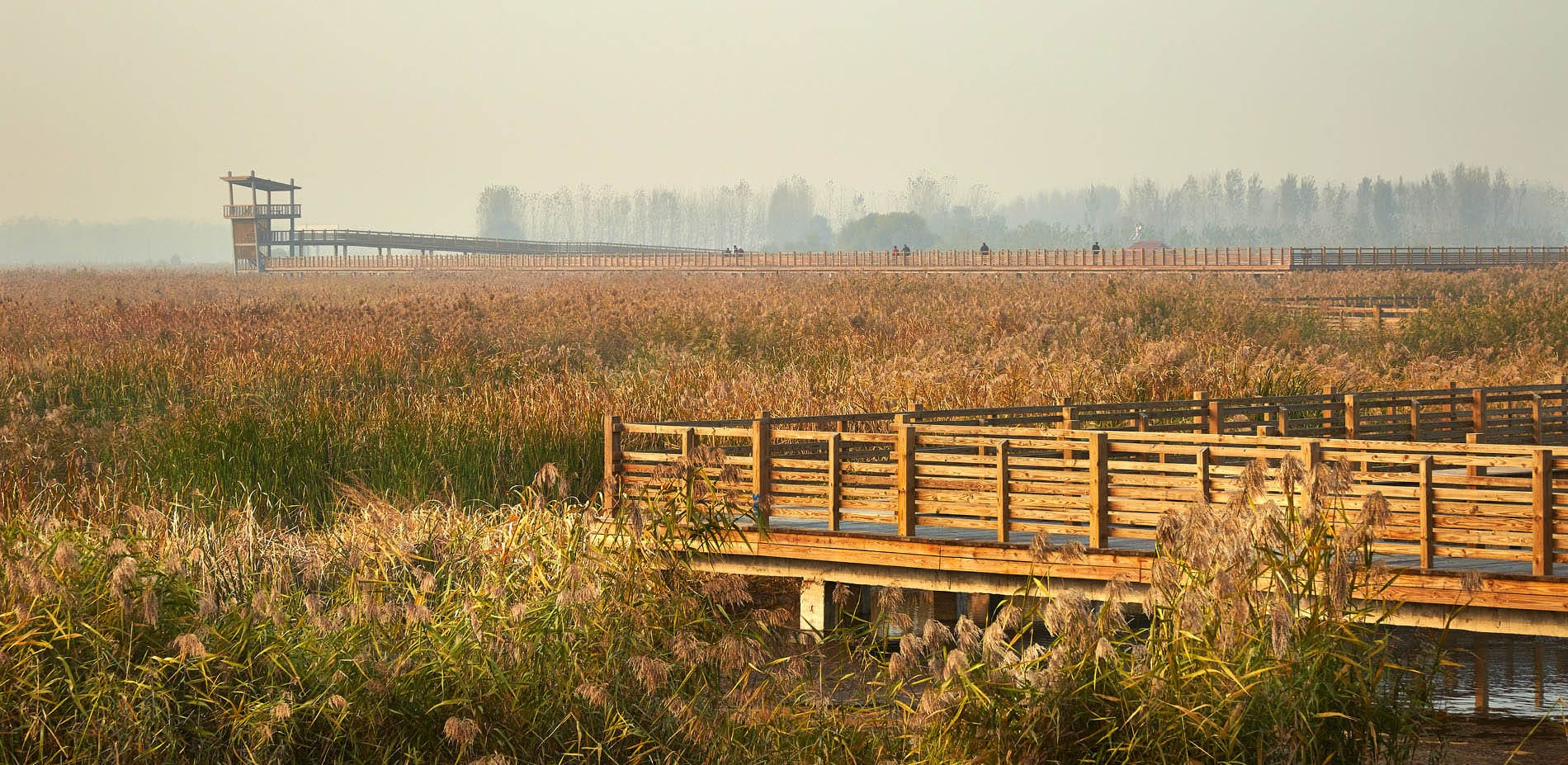
△ Wooden Trestle Road Network and Viewing Platform run through the base, creating a variety of rich experience for visitors to shuttle between reed land and poplar bushes.
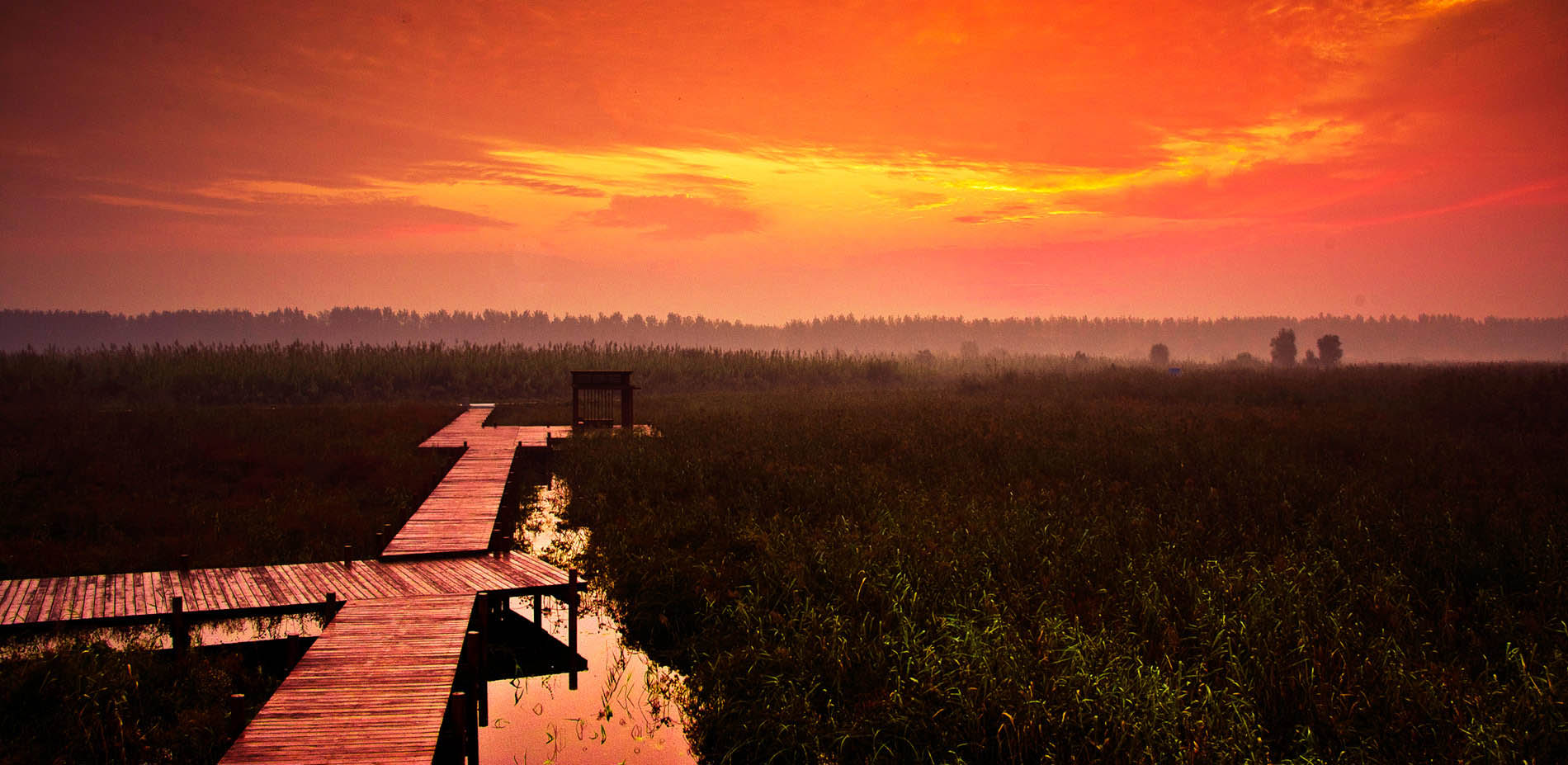
△ Wooden decks use materials from local sources as part of the project's minimally invasive design strategy.
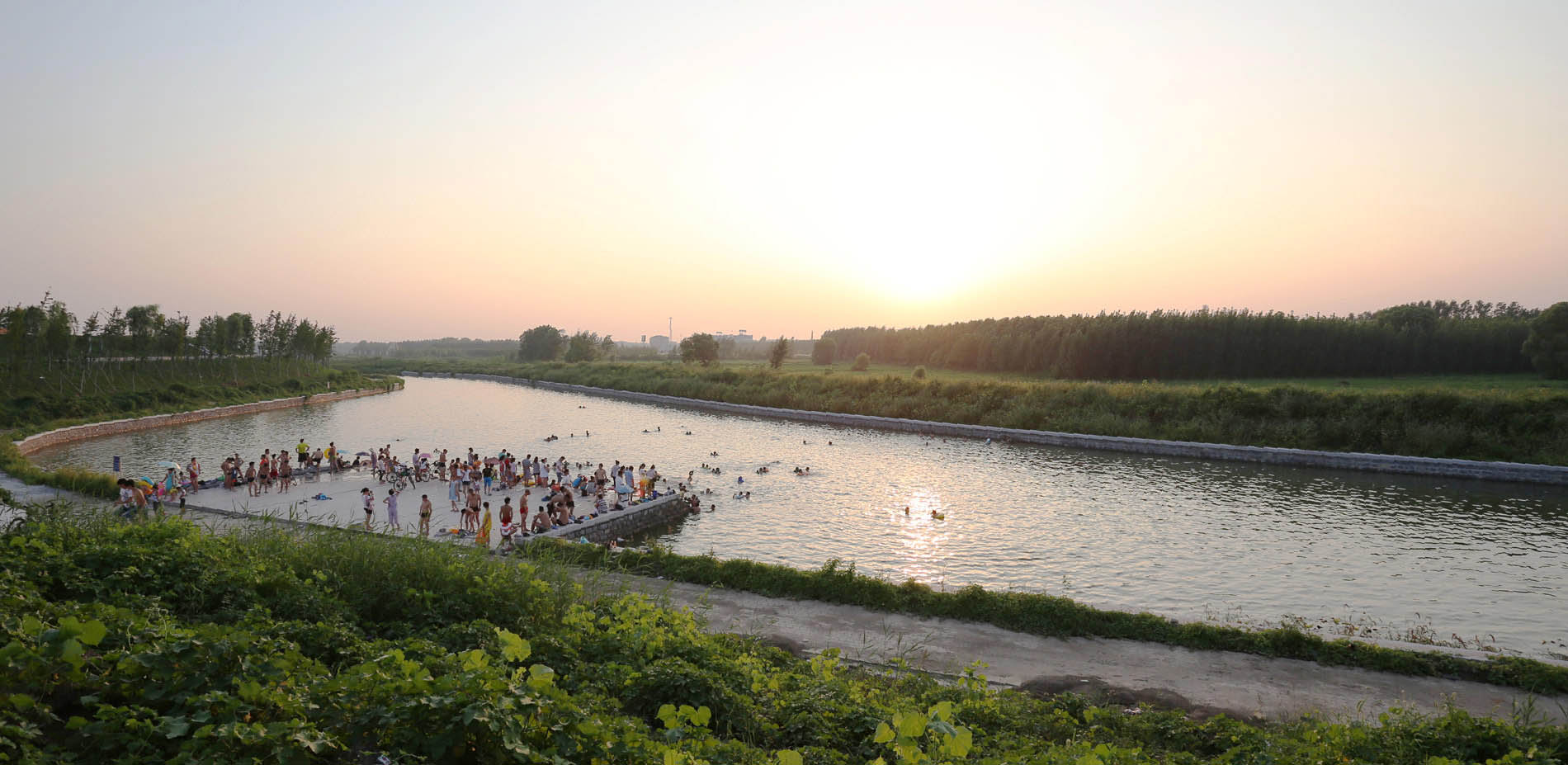
△ The water quality has improved so that people can swim in the lake.
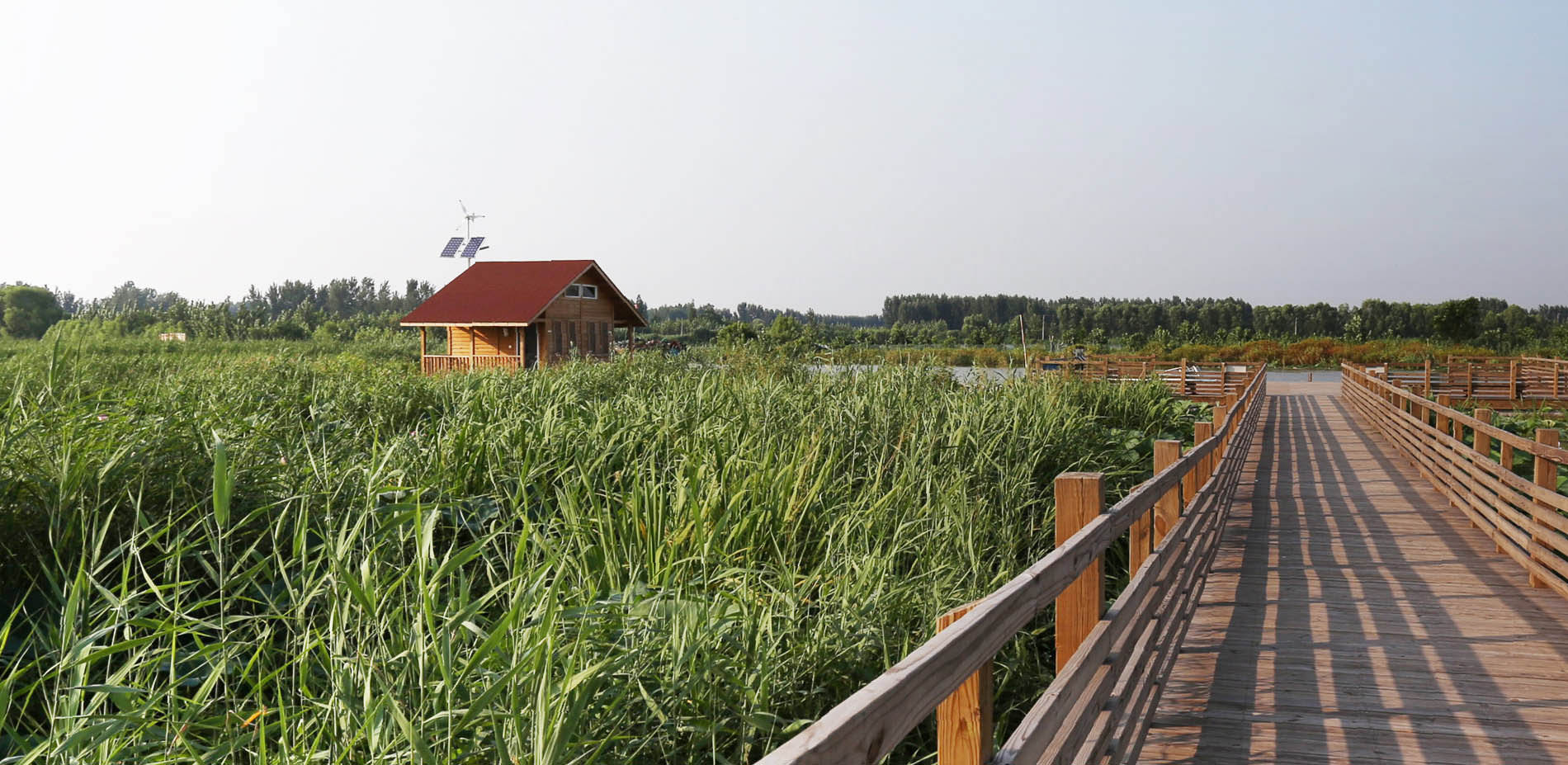
△ Green energy, such as solar and wind energy, is used to power park service facilities, including scientific monitoring equipment.
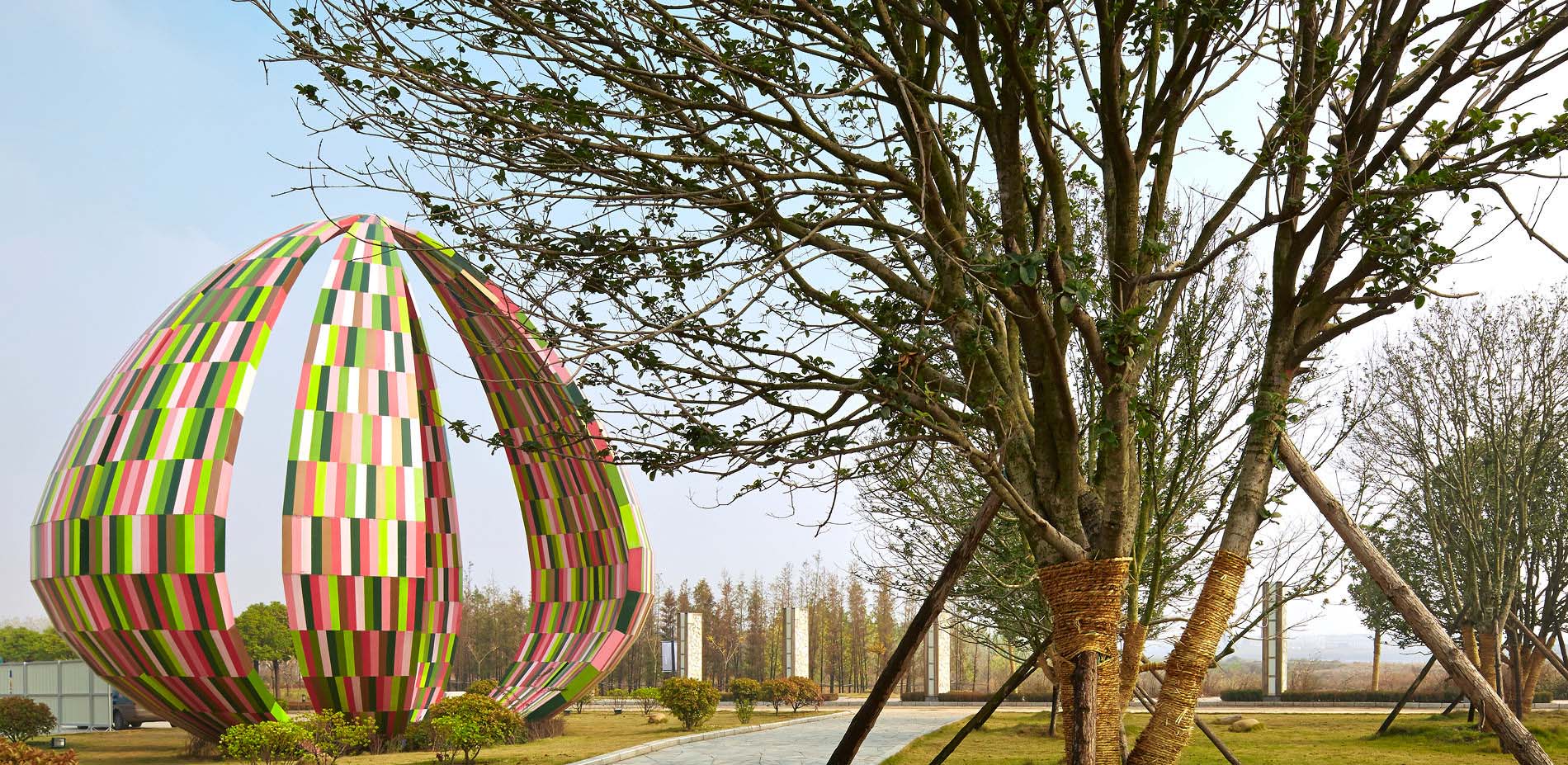
△ The lotus of Weishan Lake is of great significance to local culture and economy. This contemporary sculpture commissioned by the designer is a symbol of the entrance to the park.
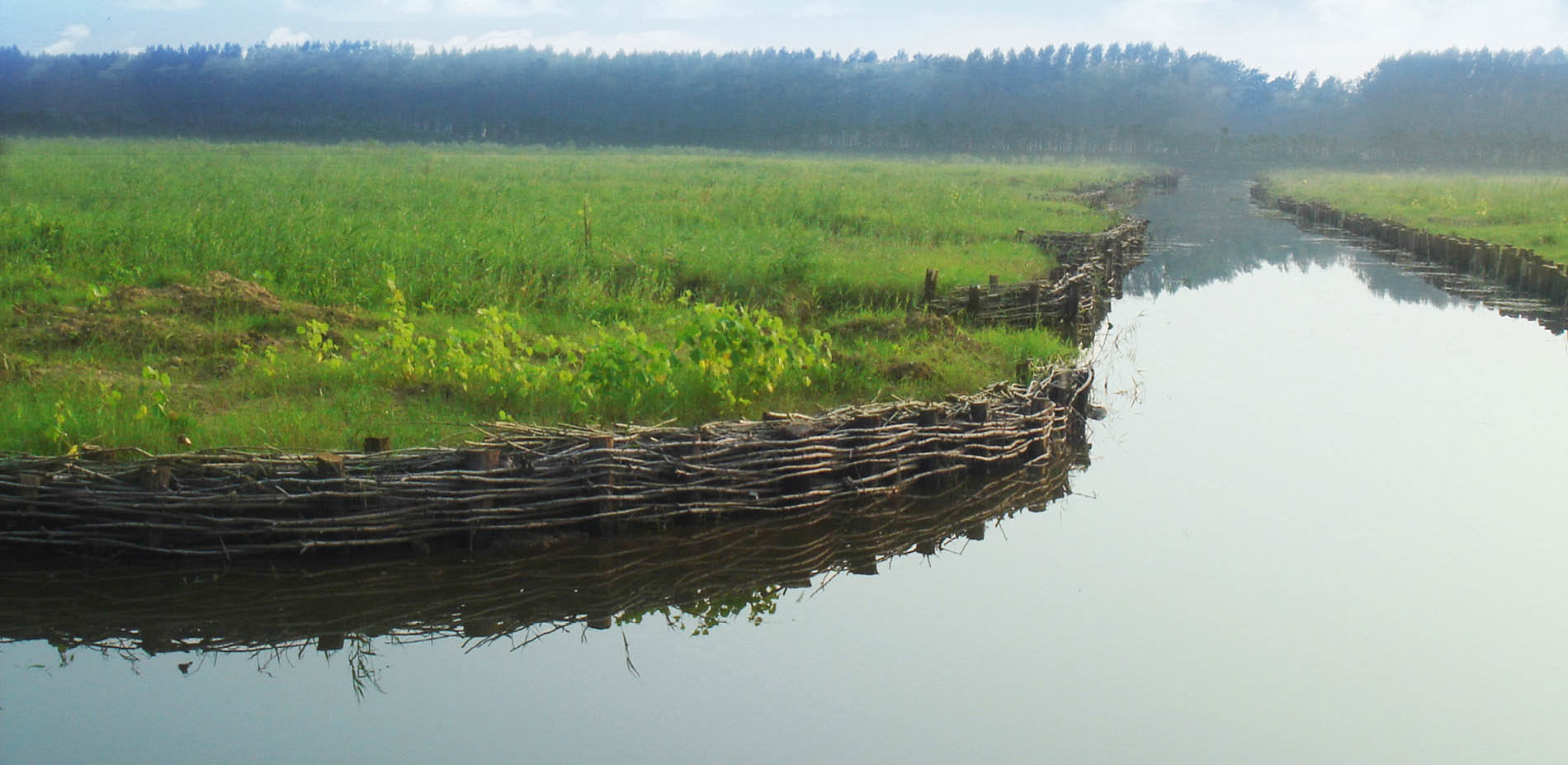
△ The rebuilt "organic" retaining wall is made of willow branches and poplar stumps in the base. Next spring, the willow branches covered around the stakes take root and germinate to fix the surrounding soil.
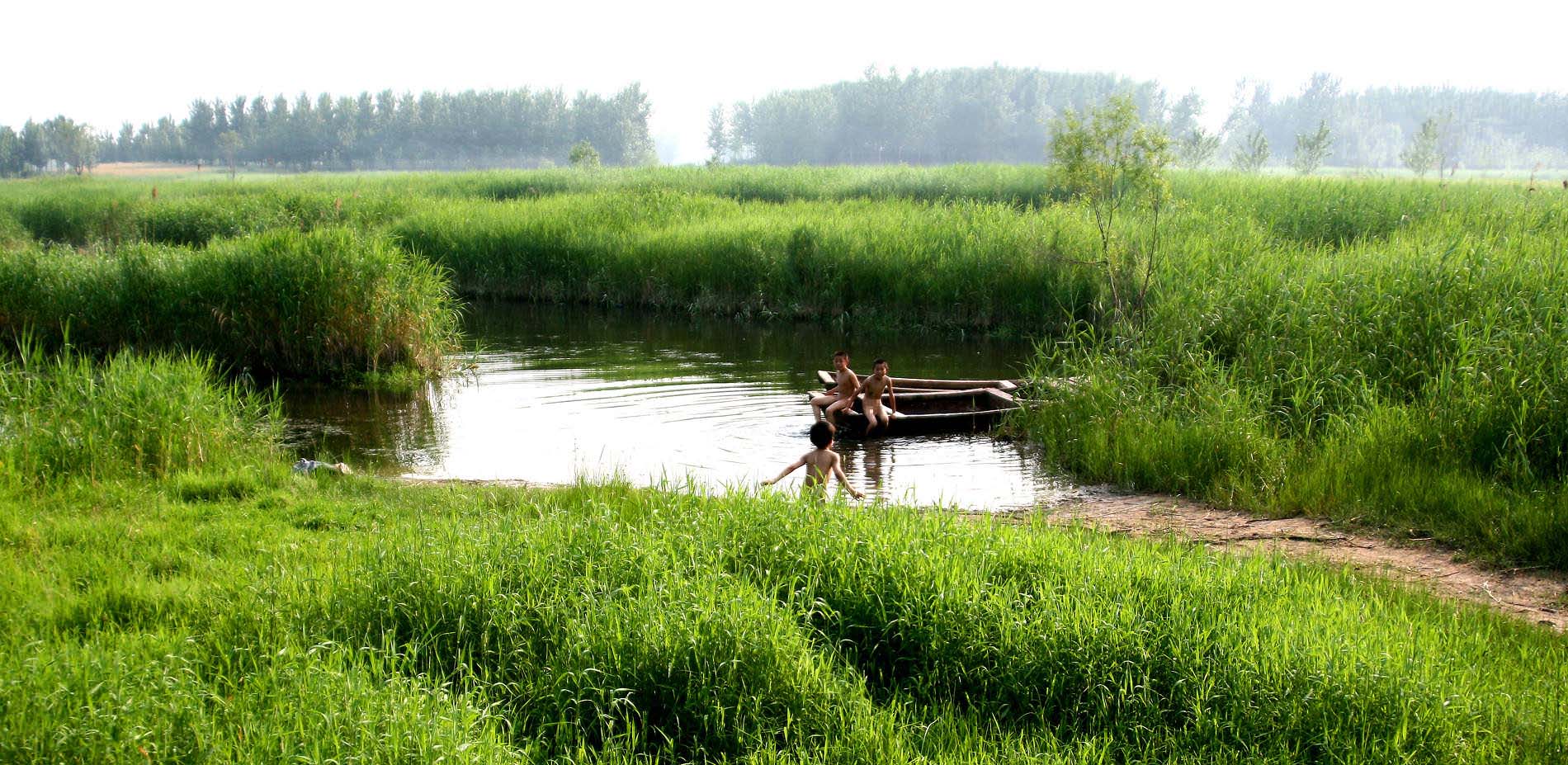
△ The lake water treated by constructed wetlands is suitable for people to play in.



